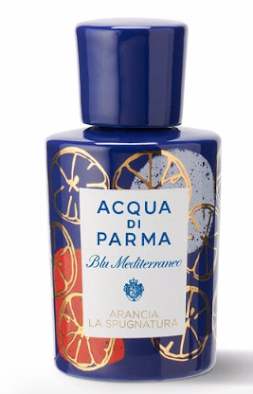Esxence - Meeting the Osmothéque
Last Saturday, friends of Bergamotto e Benzoino began the Esxence day with a meeting with Osmothéque. At 10.15 the conference room was ready to host Patricia de Nicolai, President of Osmothéque with her aide Letitia, and the bags full of precious masterpieces of the past, recreated by the technical team led by Jean Kérleo. Madame was really exquisite, a serene and smiling person who was able to convey all the passion for a precious, fully voluntary work, which consists in searching for old formulas, selecting raw materials which may also not be in use anymore, reconstructing formulas, storing in cells with constant temperature, and finally, enhancing the awareness on the conservation of our perfume heritage. The journey into the past was an articulated itinerary from the first popular fragrances in the world, to the first real perfumes containing synthetic molecules.
 The first fragrance we smelt was Acqua Admirabilis, a formula created in the seventeenth century by John Paul Feminis, a simple formula with neroli, bergamot, orange, lemon, lavender and rosemary that showed invigorating and tonic qualities earning immediate success (left, my picture of vintage bottles at Grasse Perfumery Museum). Feminis gave the formula to a distant relative, J.M. Farina, who registered the name and made it known in other European countries: the day after the Treaty of Cologne (1763) that ended the Seven Years' War, Rulers and their follows brought home bottles of this water which, since then, was just called Eau de Cologne, giving birth to a category of low concentrate scents with fresh and aromatic notes. The formula then was passed to Feminis’ two sons, married with a Miss Roger and with a Miss Gallet.
The first fragrance we smelt was Acqua Admirabilis, a formula created in the seventeenth century by John Paul Feminis, a simple formula with neroli, bergamot, orange, lemon, lavender and rosemary that showed invigorating and tonic qualities earning immediate success (left, my picture of vintage bottles at Grasse Perfumery Museum). Feminis gave the formula to a distant relative, J.M. Farina, who registered the name and made it known in other European countries: the day after the Treaty of Cologne (1763) that ended the Seven Years' War, Rulers and their follows brought home bottles of this water which, since then, was just called Eau de Cologne, giving birth to a category of low concentrate scents with fresh and aromatic notes. The formula then was passed to Feminis’ two sons, married with a Miss Roger and with a Miss Gallet. The second fragrance was the Napoleon’s Eau at St. Helena. When Napoleon was exiled on the island, he asked his valet to manufacture him something as close as possible to Acqua di Colonia, and the result contains almost all the scented herbs found on the island. The acquisition of this recipe by Osmothéque is very interesting: a few years ago a piece a desk that belonged to Napoleon was auctioned. Inside a drawer papers were found, full with notes and quantities. The buyer turned to Jean Kérleo because he didn’t know what to do papers which clearly spoke of some kind of perfume, but maybe he would be able to decipher them. The papers were signed Saint Denis, the name of Napoleon's valet, and described a perfume to be prepared for Napoleon. Fresh (citrus), aromatic (rosemary), energizing, very modern.
The third was Eau de Lubin, 1798, no longer an Eau de Cologne but a real scent, rich in balsams as Tolu and resins such as benzoin. A very balmy and pungent fragrance, which Josephine Bonaparte and Paolina Borghese particularly liked, it’s precisely with this scent that Lubin became provider of Court.
Afterwards we got to know Paul Parquet’s Fougère Royale for Houbigant (1884), the first perfume to introduce a synthetic note (coumarin, that is smell of freshly cut hay) in the formula. It 's a typical Fougère, full of green notes and sweetness, head of troops of perfumes which came after (d’you remember Drakkar Noir or Brut Fabergé?)
Then it was the original version of Jicky by Aimé Guerlain (1889), which had no fewer than 3: linalool, vanillin and coumarin. A cloud of aromatic, pungent notes and sweet, velvety ones, very charming. (to be continued here)




Commenti